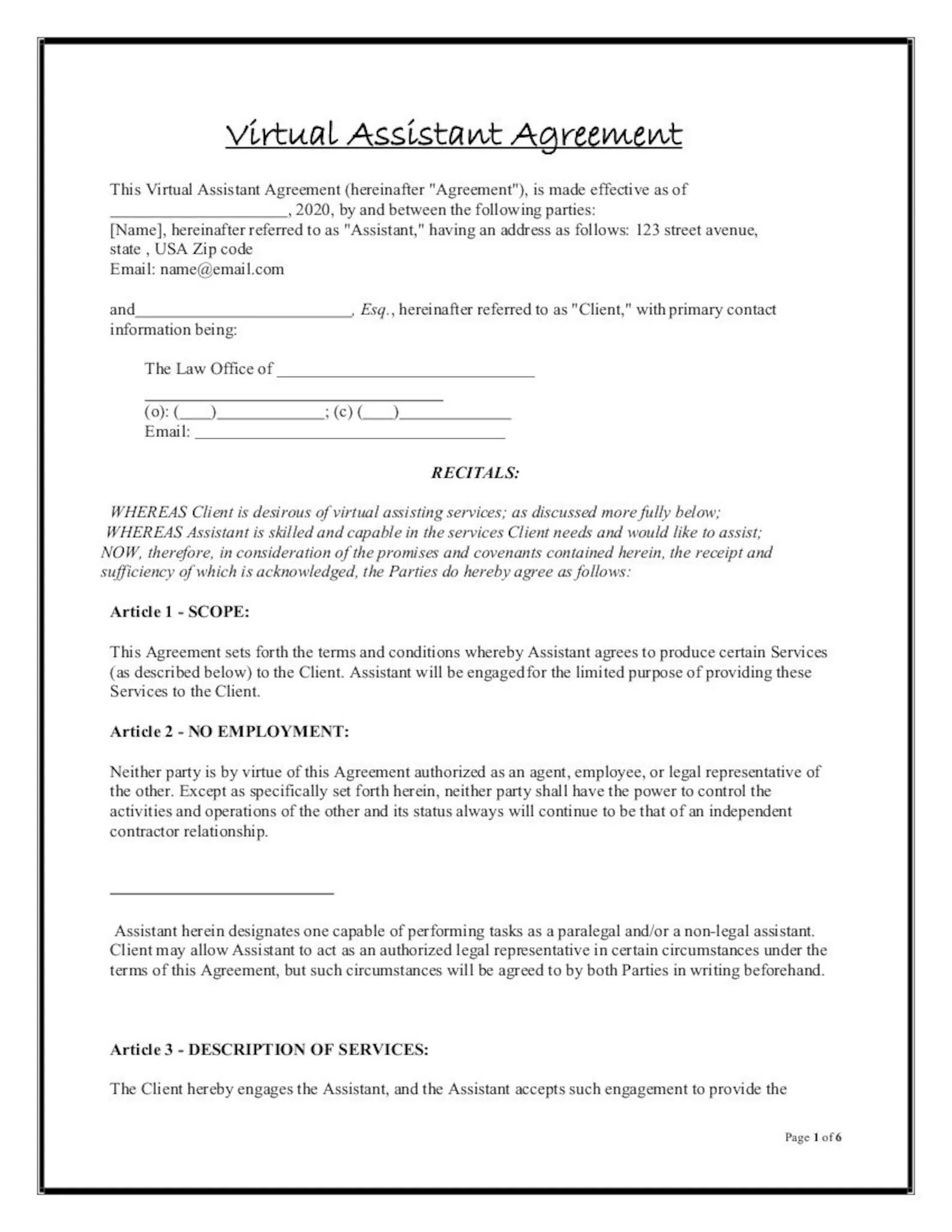A virtual assistant agreement is a legally binding contract between a virtual assistant (VA) and a client that outlines the terms and conditions of their working relationship. It establishes the expectations, responsibilities, and rights of both parties involved. This agreement serves as a crucial document to protect both the VA and the client in the event of any disputes or misunderstandings.
Why Do You Need a Virtual Assistant Agreement?
Having a virtual assistant agreement in place is essential for several reasons:
- Clarity and Communication: The agreement ensures that both the VA and the client have a clear understanding of the scope of work, deadlines, and payment terms. It helps prevent any miscommunication and confusion.
- Legal Protection: The agreement provides legal protection to both parties by clearly defining their rights and obligations. It can be used as evidence in case of any disputes or breaches of contract.
- Professionalism: Having a written agreement demonstrates professionalism and establishes a sense of trust between the VA and the client.
- Accountability: The agreement holds both parties accountable for their actions and ensures that they fulfill their obligations.
What Should a Virtual Assistant Agreement Include?
A comprehensive virtual assistant agreement should include the following key elements:
- Parties Involved: Clearly state the names and contact details of both the VA and the client.
- Scope of Work: Define the specific tasks and responsibilities that the VA will undertake.
- Deadlines: Set clear deadlines for each task or project.
- Payment Terms: Specify the payment amount, schedule, and method of payment.
- Confidentiality: Include a confidentiality clause to protect sensitive information shared between the VA and the client.
- Intellectual Property: Clarify who owns the intellectual property rights for any work created by the VA.
- Termination: Outline the conditions under which either party can terminate the agreement.
- Dispute Resolution: Specify the process for resolving any disputes that may arise during the agreement.
- Indemnification: Include a clause that outlines the responsibilities of each party in case of any legal claims or damages.




How to Create a Virtual Assistant Agreement?
Creating a virtual assistant agreement involves the following steps:
- Identify Your Needs: Determine the specific tasks and responsibilities you want your VA to handle.
- Research and Template: Conduct research and find a suitable template for a virtual assistant agreement. Customize the template to fit your specific needs.
- Review and Edit: Carefully review and edit the agreement to ensure that all the important details are included and that it accurately reflects your expectations.
- Legal Consultation: If necessary, consult with a legal professional to ensure that the agreement is legally valid and enforceable.
- Sign and Keep Copies: Once both parties are satisfied with the agreement, sign multiple copies and keep them in a safe location.
Additional Tips
- Be Specific: Clearly define the tasks, deliverables, and deadlines to avoid any confusion or misunderstandings.
- Communicate Effectively: Maintain open lines of communication with your VA to ensure that expectations are met and any issues are addressed promptly.
- Review Regularly: Periodically review and update the agreement to reflect any changes in the scope of work or payment terms.
- Consult with Professionals: If you are unsure about any legal aspects of the agreement, seek advice from a legal professional.
- Keep Confidentiality: Protect sensitive information by including a confidentiality clause in the agreement.
In Conclusion
A virtual assistant agreement is a crucial document that establishes the terms and conditions of the working relationship between a virtual assistant and a client. It provides clarity, protection, and professionalism. By following best practices and creating a comprehensive agreement, both parties can ensure a successful and mutually beneficial partnership.
Virtual Assistant Agreement Template – Download
